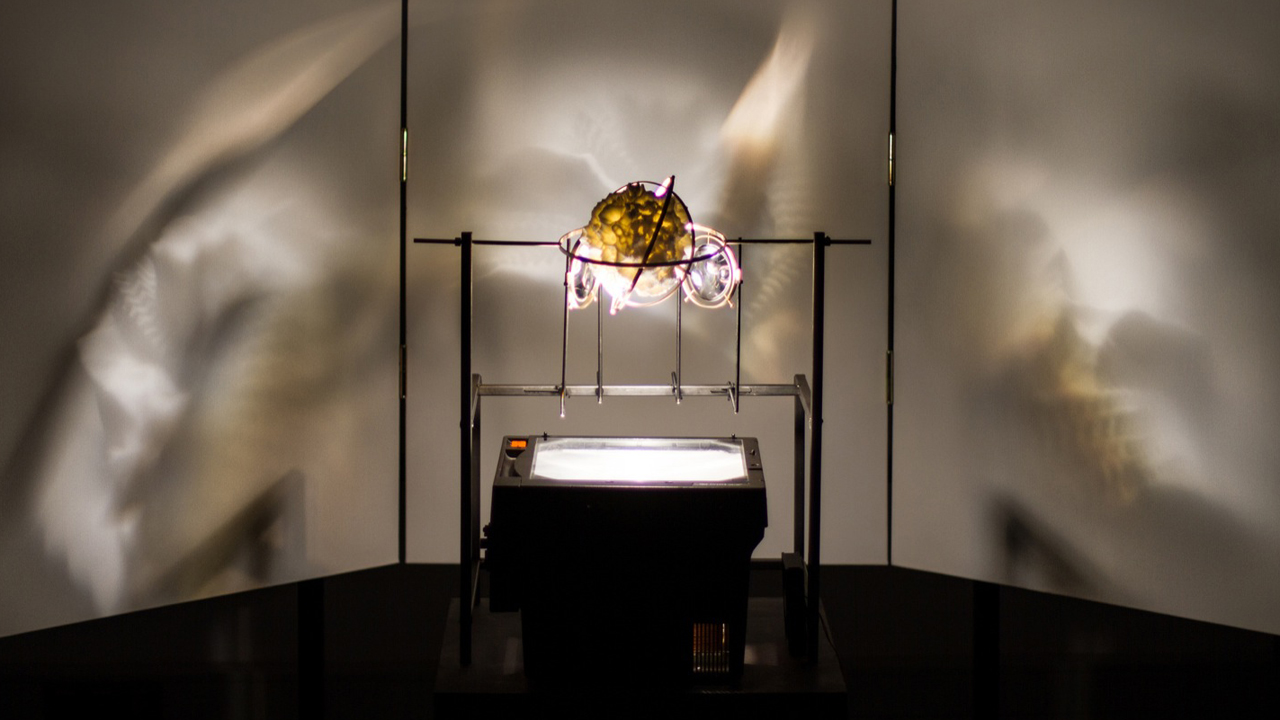Kepler’s Dream merges the archaic medium of analog projection with the latest 3D-printing technology, specifically CINEMA 4D, XPresso, MoGraph, NetFab and Shapeways. The resulting installation by Michael Burk & Ann-Katrin Krenz for the Digitale Klasse (Berlin University of the Arts) produces unique and ephemeral visuals. See the video above for a demonstration.
Mixing digital aesthetics – parametric and generative shapes – with the qualities of analog projection creates an otherworldly look that seems to be neither digital nor analog. Interacting with the installation creates a deeply immersive effect, as the instant reaction of the projection and the ‘infinite frame rate’ let this fantastical world come to life.
In the design process it became clear that a shallow depth of field of the projection invites to explore and decipher. A spherical object was chosen to allow for a seamless exploration with the freedom to move in all directions.

The device itself is some sort of anachronistic mutant. Looking at the fluid, nuanced visions, it’s fun to remember that they’re physically projected off a purely digital-born object, a rendering made into “flesh” by automated and algorithmic processes.

The formal aesthetics of the first prototypes evoked associations with the model of the solar system in “Mysterium Cosmpgraphicum” by Johannes Kepler, who thought to have found the geometrical basis of the universe in the platonic bodies. Picking up the mysticism created by Kepler, who also saw the platonic bodies as representations of the elements (fire, water, earth, air), the projected world embodies an abstract story. Each element is represented by a platonic body that transforms into parametric shapes and landscapes. For example, the tetrahedron breaks apart into jagged structures which resemble fire. The dodecahedron, the ether containing the other platonic bodies, seems to have crashed into the rigid landscape, leaving holes in the mountain sides matching the shapes of the octahedron, icosahedron, tetrahedron, and the cube. This abstract world can be explored in a non-linear way. Following the path of the structures back to the initial platonic bodies, one can find the conclusion in the all connecting dodecahedron.
(Images: Creative Applications)


